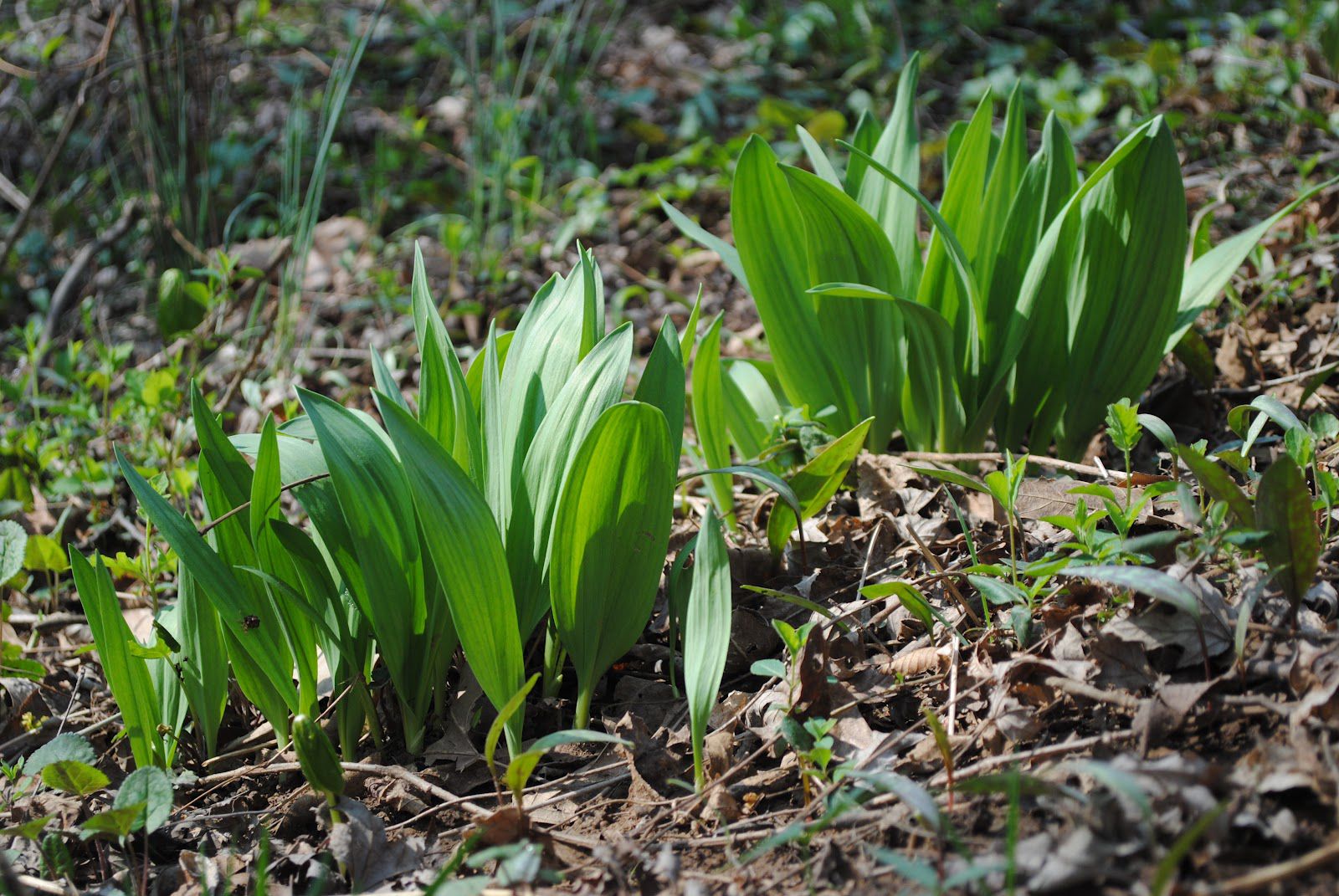Wandering through the forest with the children, we looked for a new place to explore. Botanically speaking, it’s mid-spring. Plants are very selective and intelligent and can tell us a lot about the cycle of the season. Crawling through the culvert, I see something with long, vibrant green leaves growing near the damp, earthy ground. The air is filled with a pungent, onion-like scent. It couldn’t be! Wild leek or Allium My heart skips a beat. The children aren’t aware—they’re stepping on all the leaves!
“Children come here, I scream. Look closely, what do you see?”
A new plant?
Yes!
This is a wild leek. It’s a rare sight in these parts, often over-picked and even threatened in some regions. We must act to protect them, not just pick them! No, let’s walk on and pull some of the invasive plants competing with it: the ornamental bittersweet, the heavenly bamboo, and the garlic mustard. Of course, we will place the garlic mustard in our backpacks for a later meal. The leeks lead us downstream until we can only continue if we head into the marshy area. I look up and spin my head. To the west, there’s a steep hill, and I say, kids follow me!
When I reached the top, my bare feet squeezed the dewy earthworm soil. The large maple, hickory, and oak trees tell of an ancient forest, probably tended by indigenous peoples.
On the top of the hill, my jaw drops again. We made it. Leek valley! I’ve never seen such an abundance of leeks. They carpet the ground, their long, slender leaves reaching the sky. The air is filled with their distinct aroma, a mix of onion and garlic. It’s a sight and scent I always remember.
The children scattered and started heading up the steep hill, where rare wildflowers like columbine, red elderberry, and bloodroot clung to the rocky crevices. The steep incline led them to an overhang where they would play all day. Meanwhile, the parents, some older kids, and I harvested leek leaves. We carefully avoided uprooting the whole plant, knowing it would be a lethal harvest. One of our teachers advised us to harvest just one leaf per plant. I learned about wild leeks from one of my old mentors, Arthur Hands. He took us by canoe to the side of a river to see what he called an intentional Passamaquoddy leek garden. He explained that because it was a floodplain, there were dangers in harvesting the roots; when the river flooded, runoff from upstream factories would contaminate them.
That day, with the children and parents, we enjoyed the leeks. I had a slight scratch in my throat, which soon went away after chewing on the soft, aromatic leaves and enjoying pesto, possibly with some cheese. I encourage you to visit a leek patch and, of course, protect these wonderful plants.
Join thousands of readers each month by subscribing to our newsletter. Sign Up for Our Free Rewilding Guide to stay updated with the latest stories, rewilding tips, and outdoor adventures!
Follow LMSR here: https://lionmanrewilding.com/

